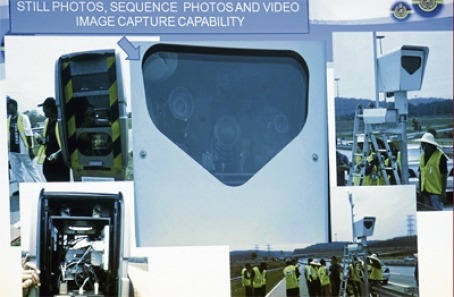This article is about the latest implementation of the Automated Enforcement System (AES) which many people and MPs from both sides of the divide have wanted postponed pending a more detailed evaluation.
I fully support the AES, provided that it is carried out professionally, it can educate the public about the dangers of speeding, running red lights and other misdemeanors related to driving.
The reasons for my objection to its present implementation are as follows:
1. Privatisation
Privatising to two companies without giving sufficient details, and claiming that this is not about issuing summons or profiting certain companies, but implementation at zero cost to the government is unacceptable.
The first question that comes to mind is this: Would two private companies be willing to invest over RM700 million if they were not making a profit?
The second question is: If the system is not about issuing summons, what then is it for? If the system is without summonses, who is going to pay the two private companies?
And the final question is: What guarantee is there that no bailout of the two private companies will occur if indeed lesser summonses are issued, and the two private companies cannot recoup their initial costs within five years?
2. Capability in reducing road fatalities?
There are many reasons for road accidents, including reckless driving, driver’s ill-health poor eyesight, drunk driving, tiredness, mechanical faults, adverse weather, poor road surfaces, etc.
Speeding has not been included in the list above for the simple reason that it is not a cause of any accident. Speed kills only when it hits something due to an accident that can happen as per the many reasons above!
So, to claim that implementing the AES will reduce fatalities is not a good enough reason.
3. Research and Development (R & D) as well as Quality Control (QC)
Malaysia is among the top countries with records of high car accident rates and death on the road. Has any government department dealing with health, transportation, spare part industries and building of highways made any attempt to find out the reasons why?
In any car accident, who do you likely to see first arriving at the scene — a tow truck, the police or an ambulance? The answer is definitely a tow truck.
After the police have finished with their investigation work, where would the wrecked car be towed to? Most likely to a private workshop.
How many wrecked cars from accidents are towed to RTD or the police R&D department for further inspection to find out whether the accident was due to a mechanical failure?
Is there any government agency to oversee the sales of auto accessories and spare parts to ensure that important spare parts like brake pads and tires meet acceptable standards?
Has the government done thorough research into the causes of accidents and accompanying statistics of at least the last ten years? Have they any statistics to show that deaths caused by accidents will not happen if the driving speed is 110 km/h and below?
The absence of committed studies, research and statistics to show the different causes of accidents will devalue the implementation of AES.
4. AES is not a money-making machine
Can you believe that two companies are willing to set up the AES at a whopping RM700 million and are not hoping to make a profit? The government knows that most people will pay up the RM300 fine imposed.
To prove that the government is not ‘whitewashing’ the rakyat with regards to their explanation regarding implementing the AES, can I suggest the following be executed when drivers receive their summons under the AES?
(a) First-time offenders: 60 hours of community service at the police station nearest to their homes – to include chores like sweeping the compound, grass-cutting, cleaning drains, washing the office windows, tables and chairs.
(b) Second-time offenders: 6 months’ suspension of driving license plus 100 hours of community service as per above and to include areas within a 100m radius of the police station.
(c) Third-time offenders: 2 years’ suspension of driving license plus two thousand ringgit fine plus 200 hours of community service as per item (b) above.
(d) Fourth-time offenders: Lifetime suspension of driving license plus five thousand ringgit fine plus 500 hours of community service as per item (b) above.
5. Conclusion
The government must acknowledge that death can happen in any accident, even if the driving speed is 60 km/h and not over 110 km/h. It all depends on the impact with objects, location, car quality and other reasons and causes.
The driving tests must be more rigorous and high standards for passing enforced. Automobile workshops must have qualified technicians to repair and service cars.
The quality of our very own Malaysian cars needs to be improved. Is the full-fledged crash test facility that is being set up in Malacca in operation now?
Implementing AES is only a small part of the overall application to solve the high rates of car accidents and death on the roads. Unless the above measures are taken, the implementation of AES will not be of much help.


What the govt should do is:
– open tender for one-off AES installations
– AES infrastructure become govt fixed assets
– all summons therefore collected by JPJ/Police (as govt income)
– periodical maintenance is only element of contract/outsourcing by private firms (just like Puspakom)
Whether AES is effective in reducing traffic offense let’s hope for the best but one thing for sure summons revenue SHOULD be collected by JPJ as GOVT INCOME
Who will fork out RM700mil without considering the return? Unless it is totally paid out by the govt,then why the minister in charge told us that the govt did not fork out a sen? The minister is misleading us or there is some agenda behind the whole thing.Looks like if we want the truth,we have to change the present govt.